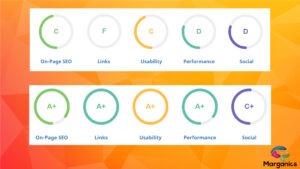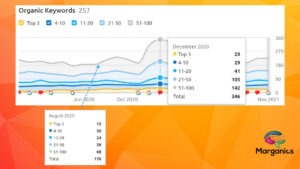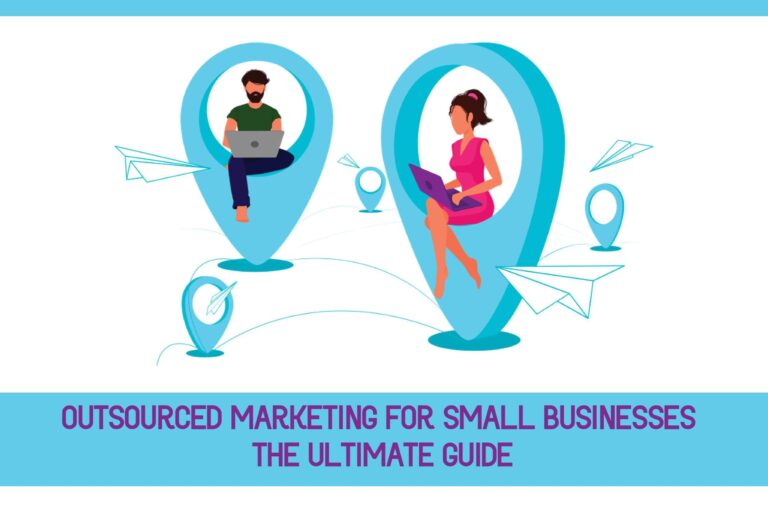TABLE OF CONTENTS
This SEO case study relates the tale of a small textile business that had problems increasing visitors and revenues. The small company needed a new marketing strategy! This small-scaled firm’s website was crawled and indexed by search engines after the implementation of good SEO techniques, and their revenue increased significantly.
This blog will go through how this little firm implemented SEO and the results of the SEO study. It’s worth reading if you’re a small-scaled company owner or an entrepreneur to generate more sales with your website!
The Current SEO & Website Performance
Like other small businesses, this small-scaled textile company did not have a good-performing website with the right SEO implementation. The website was not good because it had an old design and the pages with text were all about a single keyword. That was not good for visitors and search engines.
The small business did not know about their online competition or what keywords they should be targeting to get more visibility. Therefore, they have contacted Marganics to have a well-designed and optimized website to reach more audiences.
Conducting an SEO Audit & Analysis
The small company’s website has been evaluated for overall SEO performance, using SEMrush, Screaming Frog, and SEOptimer. Overall, most of the problems shown in this analysis were related to loading speed, URL structure, breadcrumbs, Meta Titles and Descriptions, and other critical factors. Some pages had no Meta Description, while others lacked keywords.
The following are the major components of an SEO audit:
– Meta Titles and Meta Descriptions did not include keywords
– The URL structure was missing
– No breadcrumbs
– Not a mobile-friendly website
– The design was not responsive
– The loading time was long due to poor support
– There were no internal linking
– Schema Markup was missing
– The pages did not have content and more.
Building a New Website on WordPress
The previous website for the small business did not have a CMS (Content Management System) and was produced in 2005 by using HTML. Creating a mobile-friendly and responsive website was the best approach to enhance SEO for the small business’ website. WordPress is a fantastic platform for small businesses since it offers a lot of possibilities at a reasonable cost.
Creating an SEO Strategy Based on the Small Company’s Needs
Once the new WordPress website has been created with a user-friendly and responsive design, we have focused on their SEO strategy. We have used advanced SEO Audit tools and keyword research tools to get more details about the targeted keywords. Implementing the right keyword strategy to the small business’ website will be the pillar of the overall SEO strategy. Based on the small firm’s demands, all target keywords have been prepared for the new SEO approach on the brand-new website.
The New SEO Strategy: Implementation
The new SEO strategy for the small company has been focused on implementing an advanced approach for crawling, indexing, and ranking search engines. The following were the basic steps in this process:
Using WordPress with a user-friendly design – our web design has been created using WordPress templates, which have helped to improve engagement. Since search engines pay close attention to the amount of time people spend on a website, the design should be attractive and engaging.
Optimizing the website with WordPress plugins – optimizing the images, javascript codes, and other elements on the website improved the loading speed.
Creating a mobile-friendly website – mobile users conduct nearly two-thirds of all search queries on search engines. Developing a mobile-friendly website is crucial, and it improves your organic ranking.
New URL structure with directories – the small firm has many product categories, and each category includes a variety of products. The new URL structure uses a correct directory system on the subfolder level, such as website.com/category/product_name.
New Meta Titles and Descriptions with targeted keywords – each page has a unique Meta Title and Meta Description, including the main keyword and long-tailed keywords to help it get more visibility.
Adding Schema Markup and Breadcrumbs – Schema Markup is a way for search engines to understand the content of your site. Breadcrumbs enable users to see where they are on a website; it also improves SEO for any page since breadcrumbs show in the search results and SERPs (Search Engine Results Pages).
Internal Linking – every product page should link to other products in the same category. When you place link similar product pages to each other, you create an internal linking structure that improves your SEO performance.
Writing content for each category and product page – based on the small textile company’s products, we created content for the category and product pages. The content is the king. Each page must have relevant text that has value for the user and search engines. Especially, preparing a Frequently Asked Question (FAQ) section for each page creates valuable content, and it helps to increase the overall visibility.
The majority of customers want information about the product and not just the product. The FAQ section has answers to their inquiries. There is a Frequently Asked Question (FAQ) section on every page with at least 700 words, which is the minimal requirement of today’s top-ranking websites on search engines.
The Results of The New SEO Strategy
After the small firm’s new website was created, and implemented a new SEO strategy, the results started to appear within 7-8 weeks. The small textile company’s website has seen the most traffic in 2 months, with many new clients contacting (and some converted to sales). SEO performance of the company increased significantly based on SEO audit tools and other SEO tools.
SEO Audit Results – When we utilized SEOptimer’s SEO audit tools, the results were impressive. The results of our study are displayed in this picture. The small company’s website has seen considerable improvements in terms of SEO, Usability, Performance, Social Media interaction, and security.
Organic Traffic Results – Within 13 weeks, the small company’s website has seen a 120% increase in organic traffic. Since the small firm’s target keywords were chosen after a thorough study, the traffic was also made up of a highly qualified audience.
Organic Keywords Results – The total number of ranking keywords has grown by 96%, and the top 3 ranking keywords have increased by 100%, which means they’ve doubled! Additionally, many long-tailed keywords began to rank higher in order to improve the website’s overall exposure.
In this blog, we presented one of our projects as an SEO case study for small businesses. With the appropriate SEO strategy in place, several enhancements are feasible. If you want to boost your organic traffic, or obtain all of the details about this case study’s results, contact us!




![Ultimate SEO Guide for Shopify App Listing [2023]](https://marganics.com/wp-content/uploads/2022/10/Ultimate-SEO-guide-for-shopify-app-hero-image-768x512.jpg)

